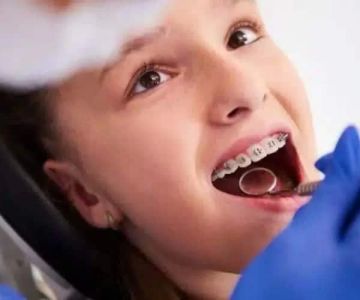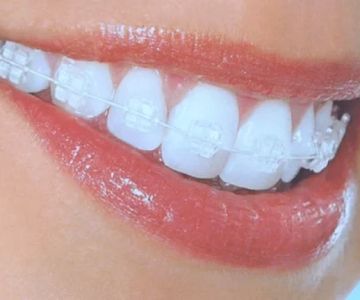The Connection Between Bite Alignment and Jaw Pain
Dentistry Toothtruth provides insightful information about orthodontic issues commonly faced in the USA, especially focusing on the relationship between bite alignment and jaw pain. As many individuals experience discomfort without understanding its source, grasping the complexities of how dental alignment impacts jaw health is essential for diagnosis and effective treatment.
Malocclusion, or improper bite alignment, is a prevalent concern in American dental practices. It involves the misalignment of teeth and jaws, leading to potential jaw pain and other complications. With statistics indicating that a significant portion of the U.S. population is affected by some degree of malocclusion, understanding its implications is vital for both patients and healthcare providers.
The importance of addressing malocclusion extends beyond aesthetics. While straightening teeth might improve one's smile, proper bite alignment is crucial for overall oral health and function. When the teeth do not fit together correctly, it places undue stress on the jaw muscles and joints, often resulting in pain or even temporomandibular joint disorder (TMJ/TMD).
Understanding Malocclusion and Its Impact
The term "malocclusion" refers to various types of bite misalignment, including overbites, underbites, and crossbites. Each type affects the overall function of the mouth differently but often leads to similar symptoms, such as jaw pain and discomfort. Malocclusion is primarily a hereditary issue, though factors such as thumb-sucking and jaw injuries can exacerbate or contribute to the condition.
In a study published in the American Journal of Orthodontics and Dentofacial Orthopedics, it was found that nearly 70% of American children show signs of some malocclusion, adding impetus to understanding and treating the condition from an early age to prevent long-term complications.
How Bite Misalignment Causes Jaw Pain
When the teeth are misaligned, the jaw muscles must work harder to bring the teeth together, leading to muscle fatigue and pain. Repeated strain can inflame the jaw joints, causing chronic discomfort. Over time, this misalignment causes uneven wear on the teeth, further compounding the problem.
Research shows a strong correlation between malocclusion and the development of TMJ disorders. As detailed by the National Institutes of Health, TMJ disorders can cause symptoms such as headaches, jaw clicking or popping, and pain spreading to the neck and shoulders.
Signs and Symptoms to Watch For
Individuals may not always be aware that their jaw pain relates to bite alignment issues. Common signs include a persistent ache in the jaw, difficulty chewing or biting, and clicking sounds when moving the jaw. These symptoms can lead to severe consequences if left untreated.
The American Dental Association suggests regular dental check-ups as an effective way to catch early signs of malocclusion, as dentists can identify subtle signs of bite misalignment that might go unnoticed by patients.
The Role of Orthodontics in Treatment
Orthodontists play a crucial role in diagnosing and treating bite alignment issues. Braces and clear aligners are common solutions that help realign teeth gradually, improving the bite without invasive procedures. For more severe cases, surgery might be advocated, but this remains a less common approach.
Through personalized treatment plans, orthodontists can significantly reduce jaw pain symptoms by correcting the underlying alignment issues, delivering tangible relief to patients who have been suffering from chronic discomfort.
Alternative and Complementary Therapies
Aside from traditional orthodontic solutions, various alternative therapies like physical therapy and jaw exercises can help alleviate jaw pain associated with malocclusion. Physical therapists can provide targeted exercises to strengthen jaw muscles, enhancing their ability to function correctly without causing pain.
Some patients also find relief through the use of bite plates or splints, which help redistribute biting pressure evenly across the teeth. These appliances can be custom-fitted by dental professionals to ensure maximum comfort and effectiveness.
Lifestyle Adjustments and Preventive Measures
- Adopting a softer diet to minimize stress on the jaw
- Avoiding habits like gum chewing and nail biting that can worsen jaw strain
- Practicing stress-reduction techniques such as yoga or meditation to decrease jaw clenching associated with stress
- Maintaining good posture, particularly neck alignment, to prevent additional strain on the jaw
Conclusion: Taking Action for Healthier Jaws
Understanding the connection between bite alignment and jaw pain is essential for addressing this common but often misunderstood issue. By exploring the impact of malocclusion and utilizing appropriate orthodontic and complementary therapies, individuals can find relief from discomfort and prevent further oral health complications.
As a resource, Dentistry Toothtruth encourages patients experiencing jaw pain to seek consultations with their dental professionals to evaluate their bite alignment and consider treatment options for improved oral health and overall well-being.




 Westgate Dental Arts
Westgate Dental Arts Coventry Family Dental
Coventry Family Dental Familia Dental
Familia Dental Dr. Daniel S. Fife, DDS
Dr. Daniel S. Fife, DDS Dentistry At Suburban Square: Michael I. Wollock, DMD
Dentistry At Suburban Square: Michael I. Wollock, DMD Comfort Care Dental
Comfort Care Dental The Importance of Oral Health Education During Pregnancy for a Healthy Pregnancy
The Importance of Oral Health Education During Pregnancy for a Healthy Pregnancy Why Skipping Dental Checkups Can Lead to Bigger Oral Health Problems
Why Skipping Dental Checkups Can Lead to Bigger Oral Health Problems Advantages of Porcelain Dental Restorations
Advantages of Porcelain Dental Restorations Best Tips for Brushing Your Teeth Properly for Healthy Gums: Essential Techniques for Oral Health
Best Tips for Brushing Your Teeth Properly for Healthy Gums: Essential Techniques for Oral Health How Can Diabetes Cause Tooth and Gum Problems? Preventing and Managing Oral Health Issues
How Can Diabetes Cause Tooth and Gum Problems? Preventing and Managing Oral Health Issues Healthy Habits for Promoting Good Oral Health and Hygiene: Tips for a Healthy Smile
Healthy Habits for Promoting Good Oral Health and Hygiene: Tips for a Healthy Smile